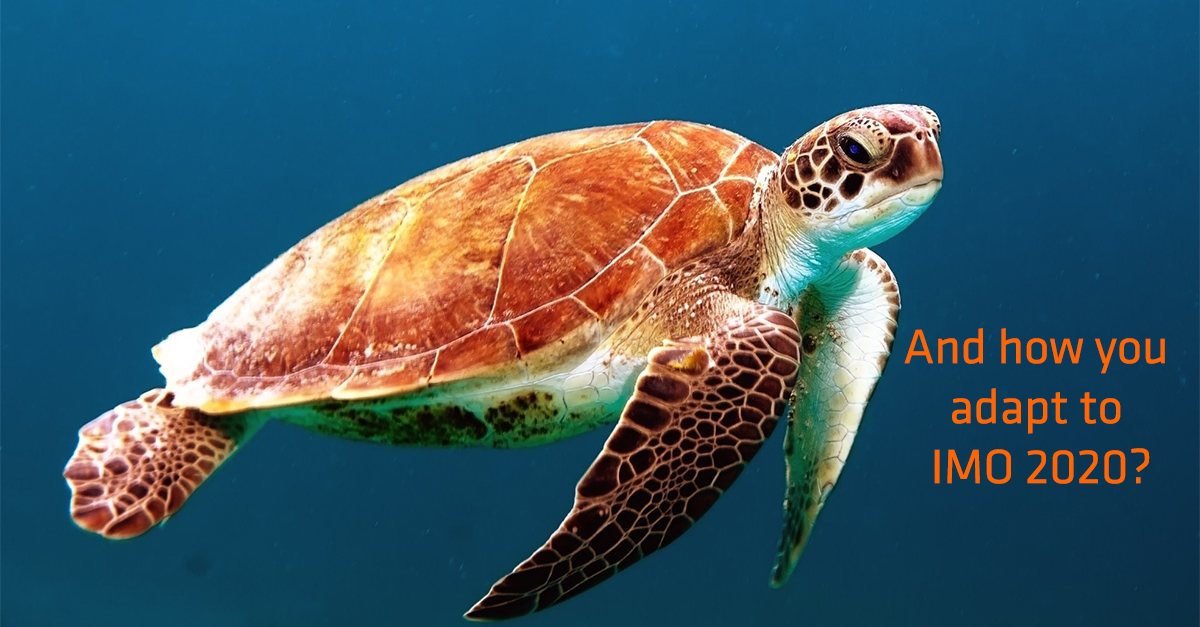It’s a new year with new marine emissions standards. If you don’t already know, on January 1, 2020, the IMO 2020 rule went into effect, reducing the amount of sulfur allowed in marine fuels from 3.5 to 0.5%. With over 170 countries on board, the benefits should add up quickly. After all, marine shipping accounts for over 90% of all global freight transportation. The new rule is expected to curtail pollution in coastal regions and ports – helping to reduce cases of early deaths and asthma linked to high-sulfur fuel emissions.
But if you’re not compliant already, how can you adapt to IMO 2020?
Currently, there are the old standby methods. For example, you can implement scrubbers or adopt very low sulfur fuel (VLSF) or marine gas oil (MGO). Or you can get to one of the roots of the problem.
In many current configurations, auxiliary machines aren’t capable of operating at variable speeds – they run at a nominal point. In order to understand this better, consider driving a car at only one speed. There’s stop and go, and go is a set speed. This is typically how generators run to produce electricity. Since they’re incapable of reducing their speed – like a car slowing down to accommodate traffic – they tend to consume more fuel to produce energy that is ultimately wasted.
With the following Poseidon Power technologies from Yaskawa Environmental Energy / The Switch, you can reduce your overall fuel consumption and vary your energy demands:
- Permanent magnet (PM) machines. PM machines are more efficient, offering high performance over the entire operating range – reducing consumption by 2–10% compared with induction machines. They’re also compact and light, minimizing the installation footprint while optimizing configurations.
- Direct in-line shaft PM generators. With high power density, better reliability and lower operational costs, these generators not only limit losses and required maintenance but also increase redundancy.
- Future-flexible DC-Hubs. DC-Hubs are an intelligent solution for multi-megawatt DC distribution. They ensure stable and secure operations, while also increasing system availability and redundancy. The solution provides vessels with a flexible choice of power generation. As a result, you can “plug and play” batteries and fuel cells to increase your green energy usage.
- Hybrid technology. This includes using a combination of all of the above technologies.
Unlike the traditional auxiliary machines, these PM technologies have the ability to run a distributed generator system, or genset, at variable speeds, offering a huge uptick in general efficiency, especially at lower speeds. The generators align with consumer demand, providing neither more nor less energy than is needed.
The result? Lower fuel consumption.
In addition, you can use the direct in-line shaft PM generators to create more energy without adding an additional gearbox. All you need to do is cut the shaft and place it inside the PM generator and then connect it with a flange. Tighten the intermediate shaft at both ends and you’re ready to go. Not only does this create extra energy from your main engine, it also might enable you to shut down some of your auxiliary engines.
We hope this information helps you stay on the road towards IMO 2020 compliance.
For more information about Poseidon Power, click here.
